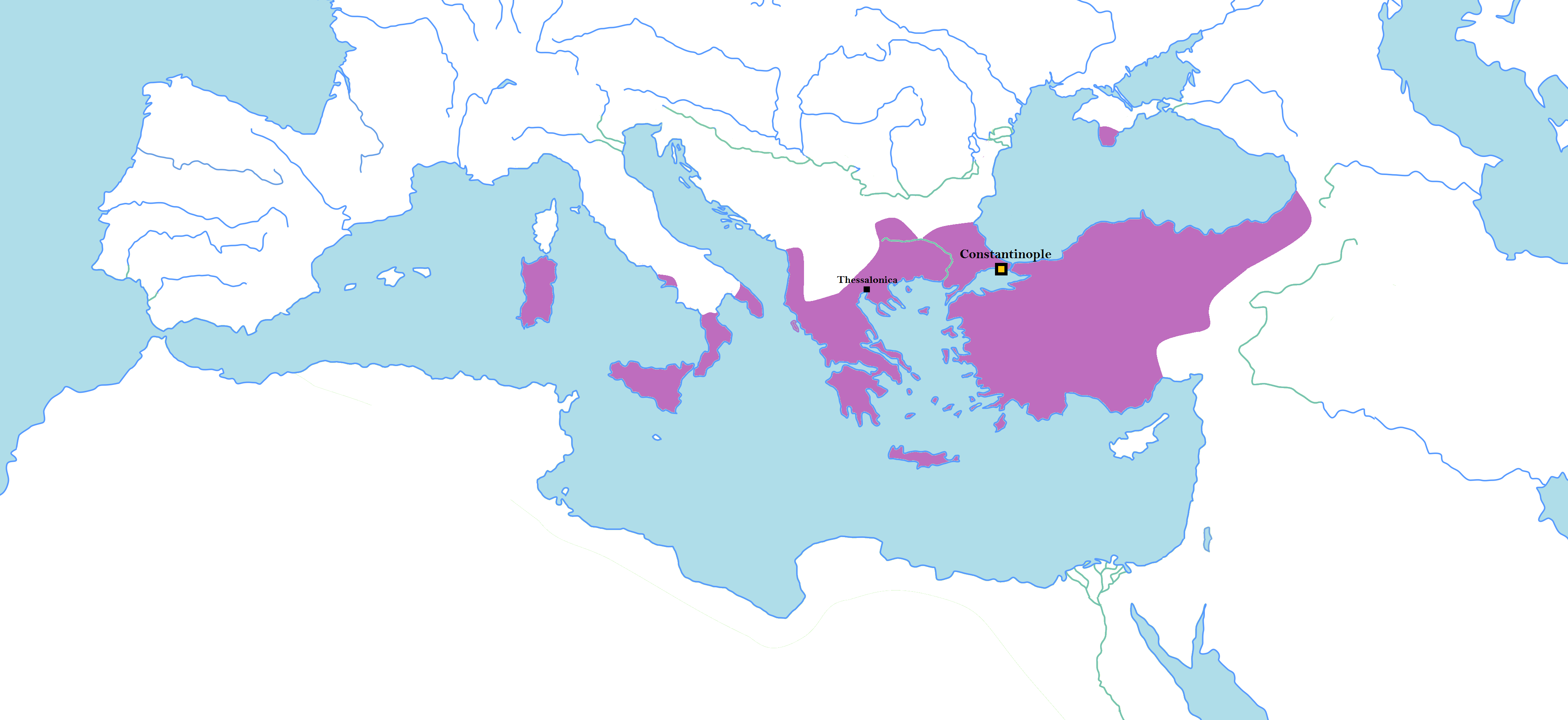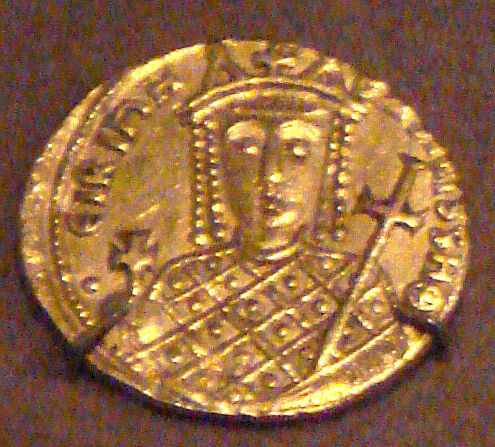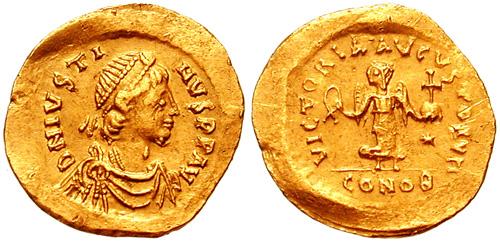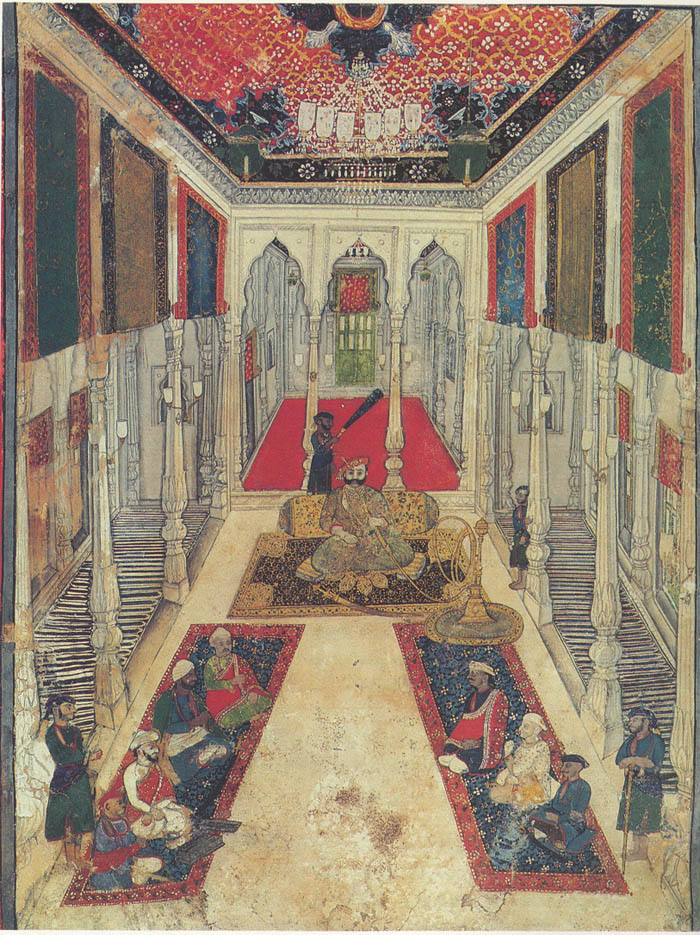|
Tagma (military)
The ''tagma'' (; : ''tagmata'', ) is a military unit of battalion or regiment size, especially the elite regiments formed by Byzantine emperor Constantine V and comprising the central army of the Byzantine Empire in the 8th–11th centuries. History and role In its original sense, the term "tagma" (from the Greek ''tássein'', "to set in order") is attested from the 4th century and was used to refer to an infantry battalion of 200–400 men (also termed or in Latin, ''arithmos'' in Greek) in the contemporary East Roman army.Kazhdan (1991), p. 2007 In this sense, the term continues in use in the current Hellenic Armed Forces (''cf.'' Greek military ranks). Imperial guards, 8th–10th centuries In later usage, the term came to refer exclusively to the professional, standing troops, garrisoned in and around the capital of Constantinople.Bury (1911), p. 47 Most of them traced their origins to the Imperial guard units of the late antique Roman Empire. By the 7th century, these ... [...More Info...] [...Related Items...] OR: [Wikipedia] [Google] [Baidu] |
Battalion
A battalion is a military unit, typically consisting of up to one thousand soldiers. A battalion is commanded by a lieutenant colonel and subdivided into several Company (military unit), companies, each typically commanded by a Major (rank), major or a Captain (armed forces), captain. The typical battalion is built from three operational companies, one weapons company and one headquarters company. In some countries, battalions are exclusively infantry, while in others battalions are unit-level organizations. The word ''battalion'' has its origins in the Late Latin word ''battalion'', which is derived from ''battalia'', meaning "battle" or "combat." The term was used to describe a large group of soldiers ready for battle. Over time, its meaning evolved in military terminology. The word "battalion" came into the English language in the 16th century from the French language, French , meaning "battle squadron" (similar to the Italian language, Italian meaning the same thing) and ... [...More Info...] [...Related Items...] OR: [Wikipedia] [Google] [Baidu] |
Thrace (theme)
The Theme of Thrace () was a province (''thema'' or theme) of the Byzantine Empire located in the south-eastern Balkans, comprising varying parts of the eponymous geographic region during its history. History Traditionally, it has been held that the theme (at the time primarily a military command) was constituted in c. 680, as a response to the Bulgar threat... This is based on the mention of a certain ''patrikios'' Theodore, Count of the '' Opsikion'' and ''hypostrategos'' of Thrace, in 680/681. However, it is unclear whether this implies the existence of Thrace as a separate command, with Theodore holding a dual post, or whether Thrace was administratively united to the ''Opsikion''. In fact, separate ''strategoi'' of Thrace are not clearly attested in literary sources until 742, while seals of ''strategoi'' are also extant only from the eighth century on. Initially, Adrianople was probably the theme's capital. Under Empress Irene of Athens, in the late eighth century, the t ... [...More Info...] [...Related Items...] OR: [Wikipedia] [Google] [Baidu] |
Nikephoros I
Nikephoros I (; 750 – 26 July 811), also known as Nicephorus I, was Byzantine emperor from 802 to 811. He was General Logothete (finance minister) under Empress Irene, but later overthrew her to seize the throne for himself. Prior to becoming emperor, he was sometimes referred to as "the Logothete" () and "Genikos" or "Genicus" (), in recognition of his previous role as General Logothete. During his reign, Nikephoros engaged in military campaigns against both the Arabs and the Bulgarians, although the outcomes were varied. While leading an invasion into Bulgaria, he suffered a defeat and was killed at the Battle of Pliska. Background According to several sources outside the Byzantine context, such as Michael the Syrian, al-Tabari, and Mas'udi, there is a tradition that suggests Nikephoros had Ghassanid Arab origins and that he descended from the final Ghassanid ruler Jabala ibn al-Ayham. Al-Tabari assets that he obtained this information from Byzantine sources, althou ... [...More Info...] [...Related Items...] OR: [Wikipedia] [Google] [Baidu] |
Hikanatoi
The ''Hikanatoi'' (), sometimes Latinized as ''Hicanati'', were one of the Byzantine '' tagmata'', the elite guard units based near the imperial capital of Constantinople. Founded in the early 9th century, it survived until the late 11th century. History The exact date of the unit's establishment is uncertain: the ''Vita Ignatii'', a hagiographic account of the life of Patriarch Ignatius of Constantinople, records that the unit was said to have been established by Emperor Nikephoros I (). A brief notice in the '' Chronicle of 811'' fragment also records that in his ninth regnal year (which began on 1 November 810) Nikephoros I, in preparation for a campaign against the Bulgars, created a bodyguard for his son and heir Staurakios, recruiting into it the sons of the aristocracy. This date is generally accepted, although sigillographic evidence as to its establishment is vague, and could support a late 8th-century establishment. According to the ''Vita'', Niketas, the grandson of Ni ... [...More Info...] [...Related Items...] OR: [Wikipedia] [Google] [Baidu] |
Irene Of Athens
Irene of Athens (, ; 750/756 – 9 August 803), surname Sarantapechaena (, ), was Byzantine empress consort to Emperor Leo IV from 775 to 780, regent during the childhood of their son Constantine VI from 780 until 790, co-ruler from 792 until 797, and finally empress regnant and sole ruler of the Eastern Roman Empire from 797 to 802. A member of the politically prominent Sarantapechos family, she was selected as Leo IV's bride for unknown reasons in 768. Even though her husband was an iconoclast, she harbored iconophile sympathies. During her rule as regent, she called the Second Council of Nicaea in 787, which condemned iconoclasm as heretical and brought an end to the first iconoclast period (730–787). During her 5 year sole reign, her public figure was polarizing, due to the setbacks faced by the Empire and her iconophilic stances, often attributed to her gender and the influence of her retinue. Her reign as sole ruler made her the first ever empress regnant, ruling ... [...More Info...] [...Related Items...] OR: [Wikipedia] [Google] [Baidu] |
Vigla (tagma)
The ''Vigla'' (, "guard watch", from ), also known as the ''Arithmos'' (, "Number") and in English as the Watch, was one of the elite '' tagmata'' of the Byzantine army. It was established in the latter half of the 8th century, and survived until the late 11th century. Along with the '' Noumeroi'' regiment, the ''Vigla'' formed the guard of the imperial palace in Constantinople, and was responsible for the Byzantine emperor's safety on expeditions. History and functions The ''Vigla'' or ''Arithmos'' was the third of the imperial ''tagmata'' to be established, with its commander attested for the first time in 791.. Both names derive from the Latin terminology of the Late Roman army: the term ''vigilia'' was applied from the 4th century onto any kind of guard detachment, while ''arithmos'' is the Greek translation of the Latin '' numerus'', both titles being used in a generic sense for "regiment". In literary sources, ''Vigla'' is more commonly used than ''Arithmos'', and is also th ... [...More Info...] [...Related Items...] OR: [Wikipedia] [Google] [Baidu] |
Leo I (emperor)
Leo I (; 401 – 18 January 474), also known as "the Thracian" (; ), was Eastern Roman emperor from 457 to 474. He was a native of Dacia Aureliana near historic Thrace. He is sometimes surnamed with the epithet "the Great" (; ), probably to distinguish him from his young grandson and co-''augustus'' Leo II (). During his 17-year rule, he oversaw a number of ambitious political and military plans, aimed mostly at aiding the faltering Western Roman Empire and recovering its former territories. He is notable for being the first Eastern Emperor to legislate in Koine Greek rather than Late Latin. He is commemorated as a saint in the Eastern Orthodox Church, with his feast day on 20 January. Reign He was born in Thracia or in Dacia Aureliana province in the year 401 to a Thraco-Roman family. His Dacian origin is mentioned by Candidus Isaurus, while John Malalas believes that he was of Bessian Thracian stock. According to the '' Patria of Constantinople'' he had one siste ... [...More Info...] [...Related Items...] OR: [Wikipedia] [Google] [Baidu] |
Excubitors
The Excubitors ( or , , i.e. 'sentinels'; transcribed into Greek as , ) were founded in as an imperial guard-unit by the Byzantine emperor Leo I the Thracian. The 300-strong force, originally recruited from among the warlike mountain tribe of the Isaurians, replaced the older as the main imperial bodyguards. The Excubitors remained an active military unit for the next two centuries, although, as imperial bodyguards, they did not often go on campaign. Their commander, the Count of the Excubitors (, ), soon acquired great influence. Justin I was able to use this position to rise to the throne in 518, and thereafter the Counts of the Excubitors were among the main political power-holders of their day; two more, Tiberius II Constantine and Maurice, rose to become emperors in the late 6th century. In the later part of the 7th century the Excubitors appear to have morphed into a parade-ground formation, and they fade from the record as a corps. Individual seals of office suggest ... [...More Info...] [...Related Items...] OR: [Wikipedia] [Google] [Baidu] |
Constantine The Great
Constantine I (27 February 27222 May 337), also known as Constantine the Great, was a Roman emperor from AD 306 to 337 and the first Roman emperor to convert to Christianity. He played a Constantine the Great and Christianity, pivotal role in elevating the status of Christianity in Rome, Edict of Milan, decriminalising Christian practice and ceasing Persecution of Christians in the Roman Empire, Christian persecution. This was a turning point in the Historiography of the Christianization of the Roman Empire, Christianisation of the Roman Empire. He founded the city of Constantinople (modern-day Istanbul) and made it the capital of the Empire, which it remained for over a millennium. Born in Naissus, a city located in the Roman province, province of Moesia Superior (now Niš, Serbia), Constantine was the son of Flavius Constantius, a Roman army officer from Moesia Superior, who would become one of the four emperors of the Tetrarchy. His mother, Helena, mother of Constantin ... [...More Info...] [...Related Items...] OR: [Wikipedia] [Google] [Baidu] |
Scholae Palatinae
The ''Scholae Palatinae'' (; ) were an elite military imperial guard unit, usually ascribed to the Roman Emperor Constantine the Great as a replacement for the '' equites singulares Augusti'', the cavalry arm of the Praetorian Guard. The ''Scholae'' survived in Roman and later Byzantine service until they disappeared from the historical record in the late 11th century, during the reign of Alexios I Komnenos. 4th–7th centuries: imperial guards History and structure During the early 4th century, '' Caesar'' Flavius Valerius Severus attempted to disband the remaining units of the Praetorian Guard on the orders of Galerius. In response, the Praetorians turned to Maxentius, the son of the retired emperor Maximian, and proclaimed him their emperor on 28 October 306. When Constantine the Great (), launching an invasion of Italy in 312, forced a final confrontation at the Milvian Bridge, the Praetorian cohorts made up the most prominent element of Maxentius' army. Later, in Rom ... [...More Info...] [...Related Items...] OR: [Wikipedia] [Google] [Baidu] |
Social Mobility
Social mobility is the movement of individuals, families, households or other categories of people within or between social strata in a society. It is a change in social status relative to one's current social location within a given society. This movement occurs between layers or tiers in an open system of social stratification. Open stratification systems are those in which at least some value is given to achieved status characteristics in a society. The movement can be in a ''downward'' or ''upward'' direction. Markers for social mobility such as education and class, are used to predict, discuss and learn more about an individual or a group's mobility in society. Typology Mobility is most often quantitatively measured in terms of change in economic mobility such as changes in income or wealth. Occupation is another measure used in researching mobility which usually involves both quantitative and qualitative analysis of data, but other studies may concentrate on soci ... [...More Info...] [...Related Items...] OR: [Wikipedia] [Google] [Baidu] |
Landed Nobility
Landed nobility or landed aristocracy is a category of nobility in the history of various countries, for which landownership was part of their noble privileges. The landed nobility show noblesse oblige, they have duty to fulfill their social responsibility. Their character depends on the country. *The notion of landed gentry in the United Kingdom and Ireland varied over time. *In Russian Empire landed nobles were called '' pomeshchiks'', with the term literally translated as " estate owner". * Junkers were the landed nobility of Prussia and eastern Germany. *Landadel were the landed nobility of the Holy Roman Empire. *In Poland, ''szlachta'' were usually landowners, with magnates being the class of the wealthiest ''szlachta''. Middle and smaller landed szlachta was called '' ziemiaństwo/ziemianie'' (from the word ''ziemia'', land), usually translated as landed gentry. *In some places, e.g., in Low Countries before Spanish rule, urban nobility with landed estates was distin ... [...More Info...] [...Related Items...] OR: [Wikipedia] [Google] [Baidu] |







